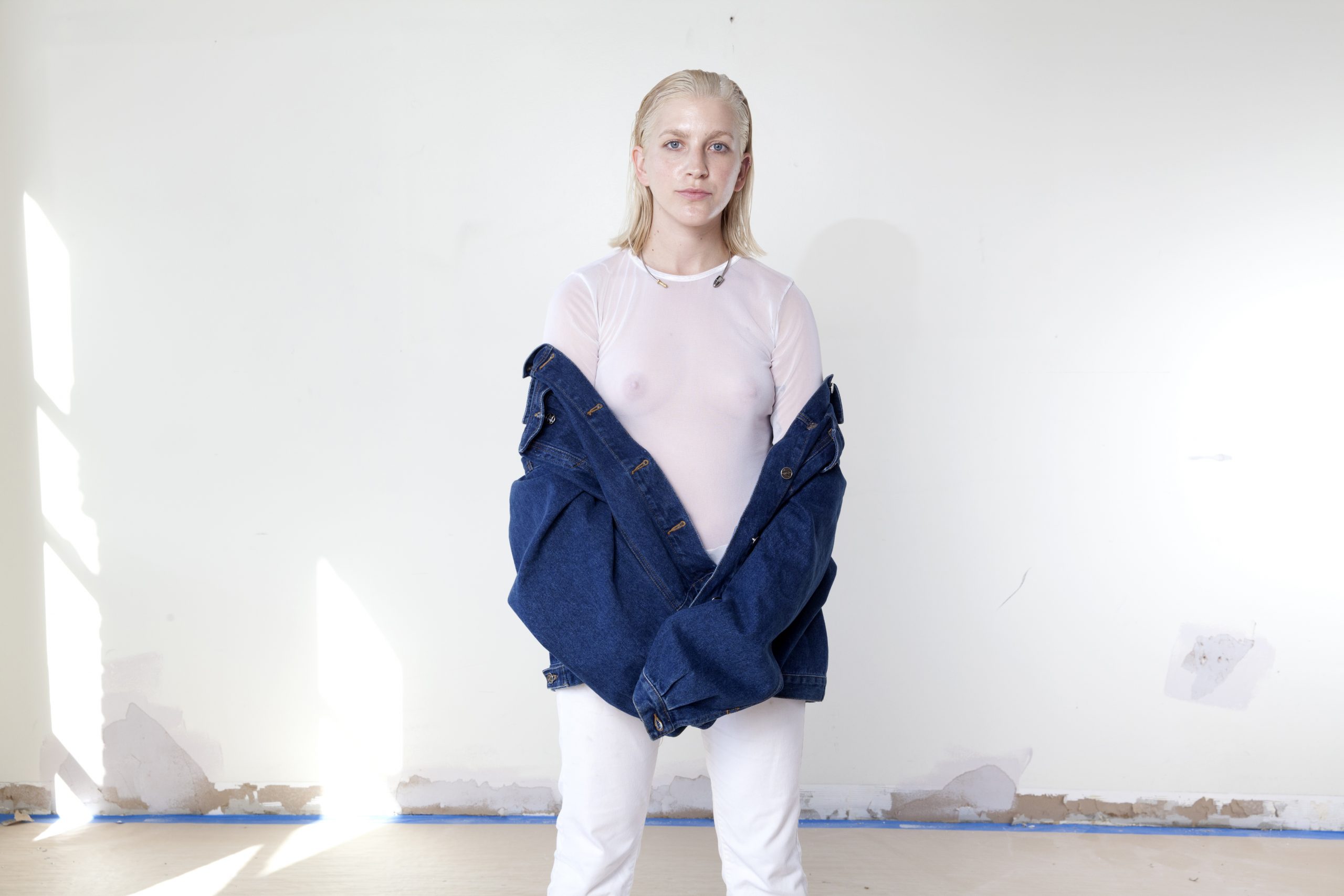Genesis P-Orridge Talks with Whitney Vangrin about the History of Performance Art
Genesis P-Orridge talks with performance artist Whitney Vangrin about the history of performance art, as well as Vangrin’s most recent works, at her home in the Lower East Side.

Genesis P-Orridge: So Whitney, last time I witnessed your work live, you were in the midst of a series where you incorporated your physical body. Could you describe that work, and the role of the bodily as a material?
Whitney Vangrin: Yes. Blood, Sweat, and Tears (2012–2013) was a four-month performance at 1:1 Gallery which involved me specifically interacting with the bodily materials of blood, sweat, and tears. In general, materiality is important to me. In May of this year, I performed a piece that was in reference to Gina Pane’s performance where she plunged her hands into boiling chocolate, in response to the death of a young drug addict, using her body to respond to the apathy that the general public has to an event like that.
I didn’t hear about that one.
There are no images of it. I just read about it, and it really struck me.
We did a book called Contemporary Artists with Macmillan’s publishing in the late ’70s. That’s the first time we came across Gina Pane. We were in one of the first big retrospectives of European art. That’s where Marina Abramović first appeared, and a lot of European women performance artists were there, but no Gina Pane. I wondered why afterward, because her work was so …What’s the word? Prophetic? It was so challenging: walking up the ladder with a razor blade. Things that Marina Abramović has since re-created, which people don’t realize are re-creations. Making a reference the way you have, and actually stating what it’s a reference to—the artist who’s trying to expand everybody’s knowledge. Do you try and make sure people know any references?
Yes, definitely. I’m indebted to all those who came before me. There is no denying that there is some type of timeline that connects me to Gina Pane, or to you for that matter. I want it to be known, that when I’m working with certain materials, or invoking visuals, that the original artist is acknowledged.
Would it be in the writing, where you make the implication clear?
Within Chocolate Counter (2014), it specifically states that this piece originated from a reading of a work of Gina Pane’s. The idea of wanting to increase people’s attention and strike a chord of empathy for bodies in pain that aren’t visible.

Just talking to you, I’m thinking about the lineage of what’s generally called performance art or body art. There are two things that occur to me. One is, it seems to be the biological females or “feminized artists” who are the ones who have really made the most challenging and memorable work. And to some degree, in my mind, the works by male performance artists tend to be just less relevant as time goes by. It’s an interesting area in that it’s women who are really pushing those boundaries, making the most challenging, intense statements. I wonder, is it because women’s bodies are policed by society? Women’s bodies are a kind of currency in contemporary society.
There’s a history within any depiction of the female body in pain. Having the ability to connect in a way that maybe some male bodies, specifically performance artists, haven’t been able to tap into. There’s a distance from pain even if you look at Chris Burden’s Shoot (1971).
It’s all very cerebral really. Even though there’s an impact, literally, on the body. It’s so carefully staged, so precise, that it doesn’t have any emotion or crisis left.
Specifically, when I’m staging my work there’s a visceral quality that takes over, and it becomes impossible to make it precise, in that way. Definitely within the immediate moment, it is complete corporealness.

Why do you think women are becoming recognized as the real body of work in body art? Is it the emotional thing? What is it that makes it so powerful?
There is this exchange, especially when people engage with live performances. They can’t deny what they feel. The fact that they are actually having this exchange of emotions with this body. Especially in my work, I’ll push my body to certain limits. Really engage with materiality and pain in some cases. I think the audience feels that. A friend just mentioned to me that a gesture-performance I staged where I wept for five minutes made her realize she was sad. I think that there’s a realization people get when they are watching performance artists.
The female body has been a battleground for thousands of years, of course, with the whole inquisition and the murdering of probably millions of midwives, healers, shamanists, and so on.
It continues constantly.
You feel the weight of all those women who came before, unrecognized—who’ve been in a position of being tortured, hurt, and in pain. It’s been totally anti-productive, totally negative pain. Is your work a sort of expiation of that, a reminder, a signal?
Yes, but, I want my work to not be limited to the female body. There are clearly lots of men that have this rage, this anger, this pain.

Do you use pain as if it’s a form of paint for a painter; or is pain important for your connection to the self?
I think the pain is a way to engage with the body and have others be aware of their engagement.
Genesis Breyer P-Orridge (born 22 February 1950) is an English singer-songwriter, musician, poet, performance artist, and occultist.